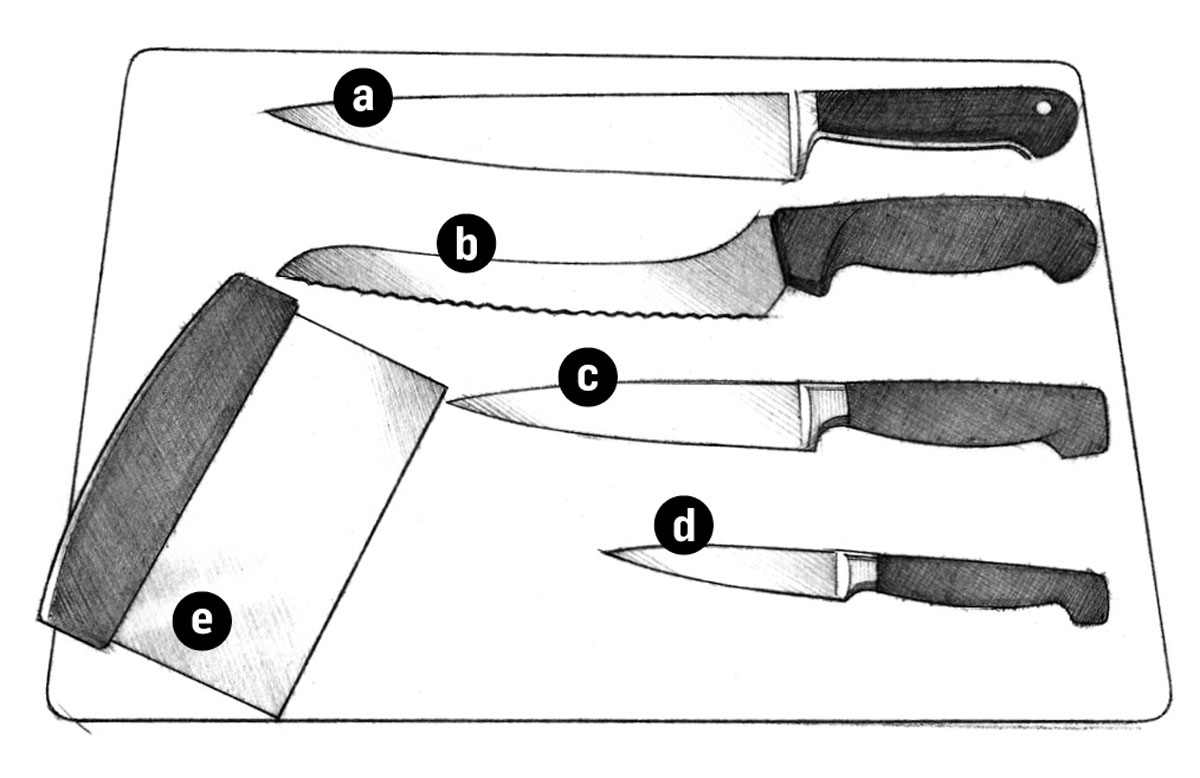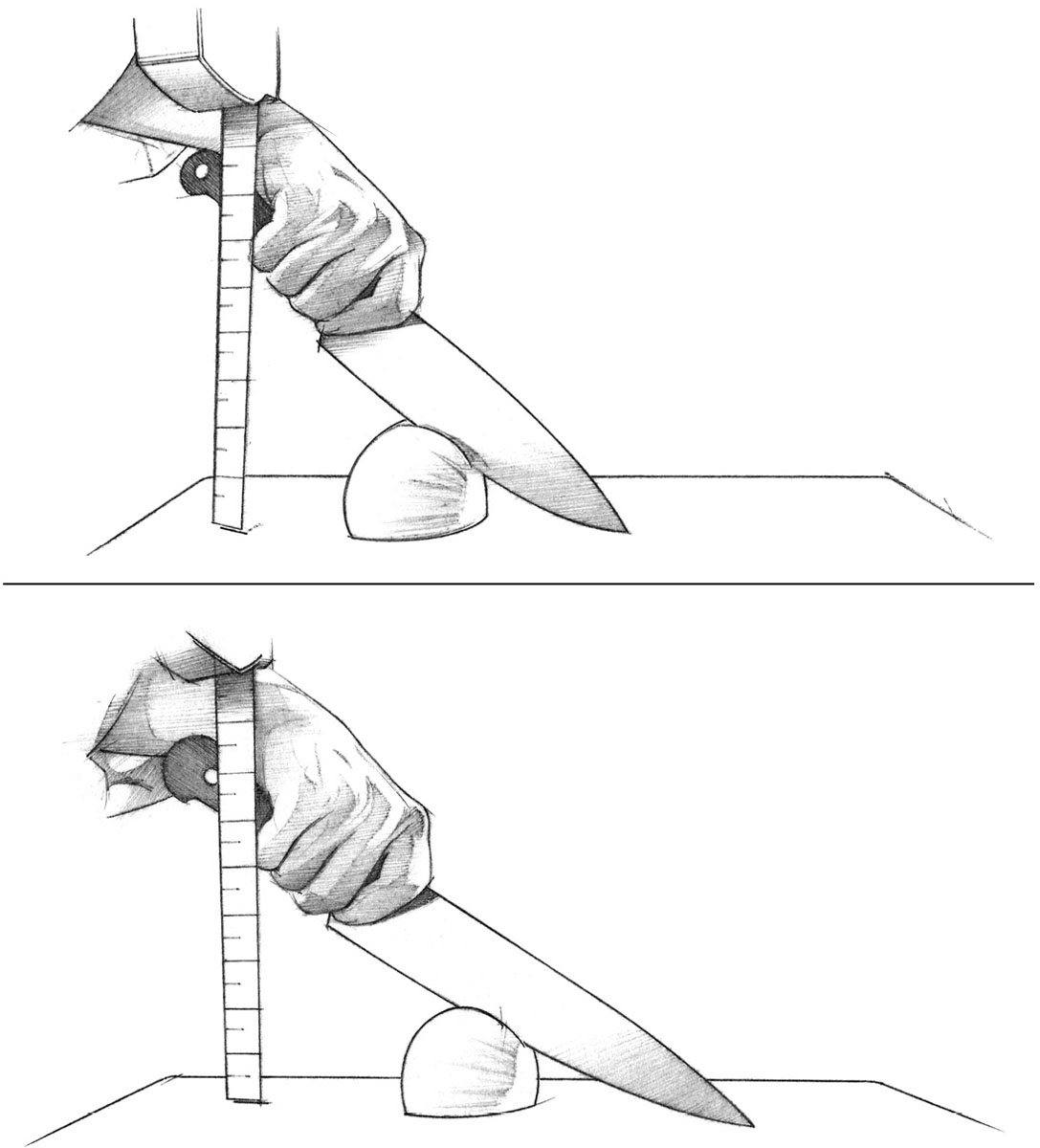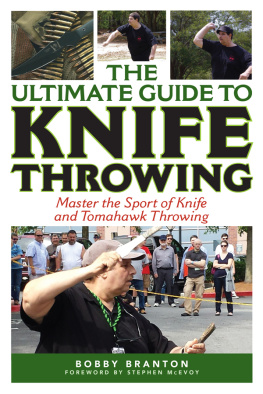For my wife, Karen, who stayed with me even though the first things I ever cooked for her were kosher hot dogs
Contents
Preface
When my grandmother was 83 years old, I was standing with her in her brother Joes kitchen. I was a mere 22 years old and was trying to prepare dinner. Uncle Joes knives were so dull that they wouldve had a tough time cutting through butter. I remembered that old saying, The only thing more dangerous than a sharp knife is a dull knife. The implication is that you have to press harder with a dull knife, and that youll probably slip and end up cutting yourself.
So I turned to my grandmother and was sure I could show off how smart I was. Gramma, I said, do you know whats more dangerous than a sharp knife? She answered right back, A womans tongue. I said, Umm, no, its a dull knife, and I explained why. I was all set to claim victory when she looked at me and said, That may be true, but theres nothing more dangerous than a womans tongue.
The moral of the story? Never try to get cute with a short, sharp-tongued Cockney grandmother. It will always end badly.
Introduction
During the hundreds of classes and cooking demonstrations that Ive taught over the years, the topic that Im asked about more than any other is knives. People have questions about what types of knives to buy, how to use them, how to keep them sharp, and more. And I discovered something along the way: its peoples concerns and questions about their knife skills that prevent them from becoming more confident cooks. Ive met many cooks who make terrific food but then tell me how stressed and nervous they are with their knives.
Well, help has arrived and youre reading it right now. This book will give you the confidence to choose and use the knives and other nonelectric sharp tools in your kitchen. Its also a reference book that you can use as you improve your skills and acquire the tools that will make you a better cook!
Most kitchens are filled with tools and gadgets that range from the most basic things that you need to cook to frivolous items that you never actually use. How do you decide which tools you need and want? How do you use them? And how do you take care of them so theyll last, in some cases, forever? This book will answer those questions so you wont end up with it seemed like a good idea things filling your kitchen drawers. Whether youre a new or experienced cook, I can guide you through the maze of knives and other sharp tools. I can help you become a better, more confident cook by choosing the tools that suit your needs and budget.
Chapter One
How to Choose and Use Your Knives
Knives are the most important tools in your kitchen. Without them, all you can do is eat oatmeal, bananas, and take-out food. Choosing the right knives is crucial. What knives do you absolutely need? And what other knives do you want after you have the basics covered?
At the bare minimum, you need to have two knives: a chefs knife for cutting, chopping, and slicing, and a paring knife for the smaller tasks. The differences between these two knives are reflected in their size and the size of the food youre cutting. A chefs knife is so large that you wouldnt be able to get the fine movements needed to take the top off a strawberry without risking some damage to your fingers. And if you were to try to carve a turkey with a paring knife, you and your guests might have to wait a long time before dinner is served. Together, these two knives meet the minimum requirements for you to be a confident cook.
Essential Knives

The four and a half essential knives, (a) chefs knife, (b) offset handle serrated deli knife, (c) utility knife, (d) paring knife, and (e) bench scraper.
But to help make cooking easier and more efficient, I think every cook needs four and a half knives. Along with the chefs knife and paring knife, these include a 6-inch utility knife, an offset handle serrated deli knife, and a bench scraper (which is what I refer to as half a knife). Any knives beyond these are task specific and will help you as your skills and collection of recipes grow.
But wait.
Some people would put one more knife into this must-have category: a Japanese Santoku knife. Many people use this knife instead of a chefs knife. Its shape and thin blade are ideal for slicing fruit and vegetables.

Japanese Santoku knife
Chefs Knife
The chefs knife will be your go-to knife for the vast majority of your cutting, chopping, slicing, and dicing. With it you can carve meat and poultry, chop onions, slice tomatoes, and mince cilantro and parsley. Plus a whole lot more.
Chefs knives generally come in three sizes: 8, 10, and 12 inches. The most popular size is the 8-inch knife. Many people feel a larger knife is too big, and that it will be less safe and effective to use. But if you hold your knife correctly and follow the chefs knife techniques, youll find that a 10-inch chefs knife is more efficient, less tiring, and safer to use than an 8-inch one.
The Parts of a Chefs Knife

This might seem contradictory, as it seems like you will need more effort to control a longer knife. But, if youre slicing an onion, or almost any food, your arm and wrist will have to lift higher with a shorter blade. Thats because chefs knives have an area thats used most effectively for slicing and chopping. Its like the sweet spot on a tennis racquet, golf club, or a baseball or cricket bat. On the chefs knife, this is toward the back half of the blade. This is where the weight of the knife, combined with your effort, gives you the most effective cutting area. A shorter knife has a smaller sweet spot, and it must be lifted higher for that area to cut the food. As a result, the area that actually cuts the food is smaller. This puts more strain on your wrist, arm, and shoulder. For the same cutting results, with an 8-inch chefs knife, you have to work harder. And for a longer period of time too.

An 8-inch knife (above) versus a 10-inch knife (left). Note the extra height thats needed to lift the shorter knife.
How to Hold a Chefs Knife
While its important to be able to cut your food as you want, its even more important to do it safely so youll end up with as many fingers and thumbs as when you started the day. Remember, you want to cut your food, not your fingers.
Lets start with the knife hand. The first illustration on the next page shows the correct method; the next two illustrations show comfortable but unsafe ways to hold a knife.
The illustration showing knuckles under the handle highlights two problems. With the knife held this way, your knuckles will hit against the cutting board. This gets painful after a while. The second problem is that holding your knife like this means that you dont have full lateral control of your knife. This will cause your knife to wiggle from side to side. In the illustration with the index finger extended, you probably wont hit your knuckles on the board but youll still have poor lateral control of the knife. If you are cutting something hard, like a carrot, the knife will probably slip a little. Or a lot.















